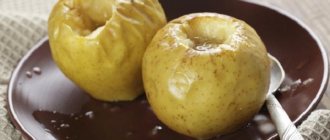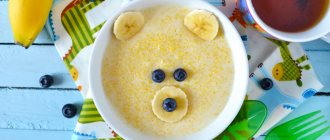Dear mothers, I, Lena Zhabinskaya, am glad to welcome you to my blog! As a mother of two children, I know firsthand how important it is to choose the right foods for complementary feeding, because it depends on whether you introduce adult food quickly and easily, or whether the baby doesn’t like it and the topic of complementary feeding will have to be closed for several weeks.
I have seen in practice that it is zucchini puree for complementary feeding that occupies a special place among all options for complementary feeding from vegetables. Even the most picky children who don’t want to know anything other than their mother’s breasts can get acquainted with zucchini without any problems if it is prepared correctly. How? You'll find out soon!
Why is it useful?
Zucchini contains B vitamins, vitamin C, unsaturated fatty acids, mono- and disaccharides, iron, magnesium, zinc, sodium, potassium.
It consists largely of water, so it has less fiber than other vegetables. In addition, dietary fiber is more delicate. All this together leads to the fact that the vegetable is perfectly absorbed even by the immature digestive system of a baby.
This is a hypoallergenic vegetable, that is, it is extremely rarely capable of causing allergies, only in exceptional cases associated with individual intolerance to the product.
This is a low-calorie vegetable; 100 g of zucchini contains approximately 30 calories. This means that it is also indicated for children with a tendency to be overweight.
The unique ratio of potassium and sodium in zucchini helps to normalize the water-salt balance throughout the child’s body. Provides improved functioning of the cardiovascular and urinary systems, improves oxygen supply to the brain.
Benefits of zucchini:
- Good tolerance;
- Low risk of allergies;
- Low calorie content;
- Contains many vitamins and minerals;
- Simple, quick and easy to prepare;
- Low cost during the season;
- Goes great with all other vegetables, cereals and meat.
When to enter
Zucchini is ideal as a first complementary food if you decide to start with vegetable purees rather than fermented milk products or cereals.
According to the official position of the World Health Organization, any complementary foods are introduced no earlier than the baby reaches the age of 6 months, regardless of the type of feeding (natural, artificial or mixed).
Thus, your baby’s acquaintance with zucchini can begin no earlier than 6 months.
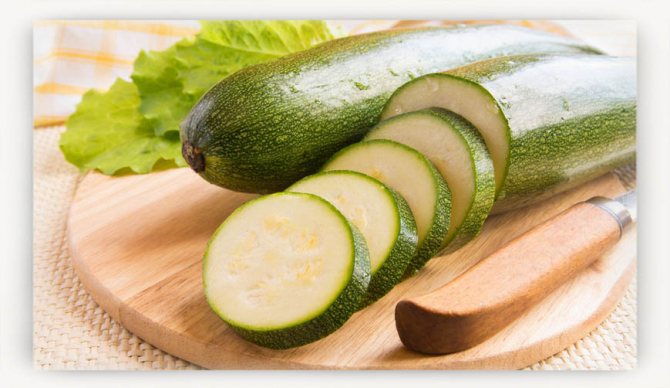
As for the time of day for new food, it is better if it is in the first half of the day (approximately before 14:00). In this case, we will have a lot of time ahead to carefully monitor the baby’s reaction to the new product.
In addition, by improving intestinal motility and stimulating the digestive system, it is quite possible that after a few hours the baby will pass well. Agree, it’s easier to deal with a dirty diaper in the light of day, rather than half asleep at night.
If the baby is intolerant to the product or is not ready for complementary feeding, it is also better to help him fight the resulting gas and colic during the day rather than at night.
Introduction rules
- As we have already indicated, acquaintance with a new product should begin in the first half of the day.
- If this is the first complementary feeding and the baby has not yet tried other vegetables, you should offer a one-component puree or puree soup made from zucchini alone, and, for example, not from zucchini and cauliflower together. This is necessary in order to understand what exactly caused the undesirable reaction.
- As a first serving, offer the baby 2-3 teaspoons and supplement with breast milk or formula. If there are no adverse reactions, the next day double the portion (4-6 spoons), and so on, by the end of the week bringing the portion size to 80-100 g at 6-8 months and 120-150 g at 9-10 months.
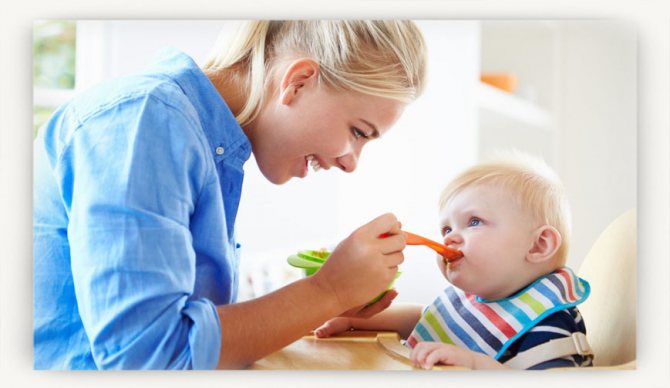
- Watch your little one carefully throughout the day. If you have any problems with your tummy (bloating, gas, colic), put off complementary foods.
- If a child does not eat complementary foods, is capricious, turns away from the spoon, cries and expresses his dissatisfaction in other ways, do not insist. Offer again, but not earlier than in 10-12 days. It often happens that it takes 8-10 attempts to offer one or another new dish before the child begins to eat it with pleasure.
RECIPE: Zucchini pancakes for children
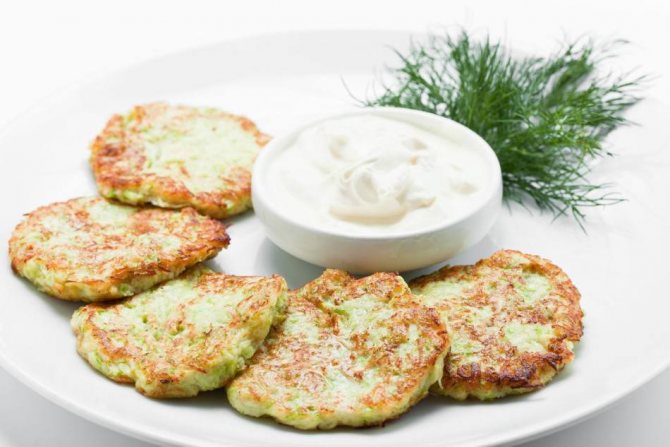
Zucchini pancakes are a wonderful food for a child, and children eat them with pleasure, especially if they are also flavored with sour cream.
- Grate the zucchini, add 1 or 2 tablespoons of flour, stir and add salt.
- Fry like regular pancakes in vegetable oil
- Serve to baby warm and with sour cream
How to choose the right zucchini for making baby food
- The most useful are young green fruits up to 20 cm long. The yellow color and large size of the fruit indicate that it has outgrown. As a rule, such specimens are much less useful; inside there are large hard seeds and a loose center. Such zucchini is not suitable for feeding a baby.
- The surface of the fruit should be elastic.
- The skin should be free of dark spots, dents and signs of damage.
- The fruit should have a neutral smell.
- There should be no obviously spoiled fruits on the counter nearby, with traces of mold and rot.
Choosing the “right” zucchini
Young mothers and grandmothers are interested in the question of how to properly freeze zucchini for babies. First of all, you need to know which vegetables to choose for storing in the freezer.
- Not all zucchini are suitable for baby food: you need to choose young specimens that have delicate skin and a seed chamber that is practically undeveloped. It is these frozen vegetables that retain whole pieces after thawing.
- Vegetables should be fresh, smooth, the skin thin and shiny.
Warning! It is not recommended to freeze zucchini with any damage for winter feeding for infants.
A properly frozen vegetable can be used for first complementary feeding without fear. After all, all nutrients, vitamins and microelements are preserved in it. They prepare puree and light soups from frozen squash. Zucchini can be baked, just like fresh vegetables. As your child gets older, you can prepare soups and purees with the addition of other vegetables.
How to choose ready-made zucchini baby food in jars
If you want to significantly save time spent at the stove or go on a trip, buying ready-made canned food is what you need.
It is completely safe, sterile, and the conditions for the production of food for infants undergo the most stringent quality control from inspection bodies.
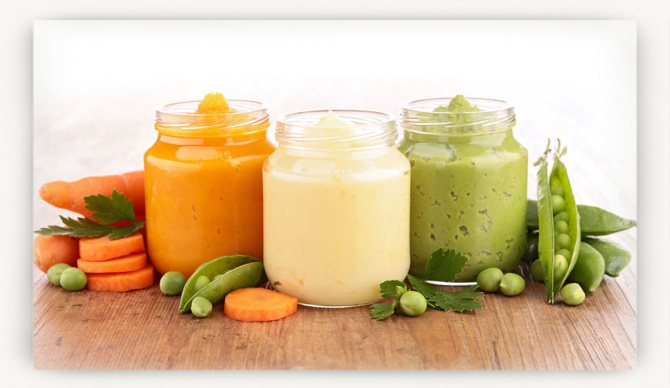
However, you need to know how to choose the right product for your first complementary feeding:
- The product can be packaged in a glass jar, a small tetrapack (like juice), or plastic packaging. All options are equally appropriate. The main thing is that the packaging is not damaged.
- The product composition for the first complementary feeding should contain only zucchini and water.
- The expiration date of the product should be with a reserve so that there is no doubt about freshness.
- Pay attention to storage conditions. As a rule, the manufacturer indicates the required storage temperature of up to 25 degrees. Accordingly, if the store premises are very hot, there is no guarantee that the product has maintained safety and quality.
- It is advisable to choose a product from a popular brand, which is present in large quantities on the shelves of many stores. In this case, there will be no problems with replenishing zucchini supplies if the baby likes it and is suitable for a specific brand of product.
Other cooking methods
Previously, we reviewed the cooking method as the simplest, fastest and most understandable, judging by the reviews of young mothers. You already know how long to cook zucchini. In addition, you can prepare it in other ways.
For a couple
In a double boiler, saucepan or slow cooker with a special insert, zucchini, cut into cubes or rings, is cooked for about 20 minutes.
This method is considered more gentle and preserves more vitamins in the product. However, it is more labor-intensive than stewing and cooking in a saucepan.
In a slow cooker
As a rule, the vegetable is cut into cubes or rings, placed on the bottom of the multicooker bowl, filled halfway with water and set to “soup” mode for 30 minutes.
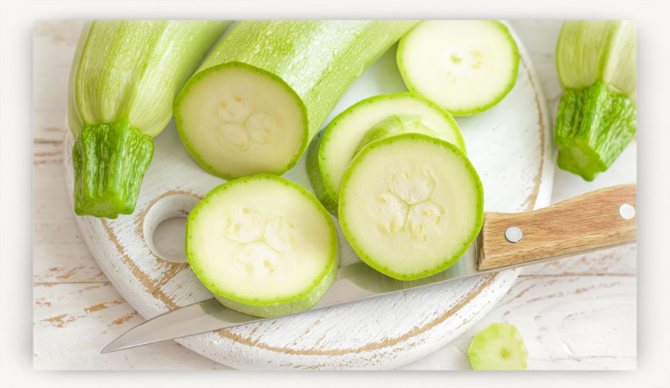
If your multicooker does not have such a mode, you can manually select the 100 degrees and 30 minutes mode.
In the oven
The baking method is considered one of the most useful. But I think it can only be used if you are baking vegetables for the whole family. Otherwise, it seems to me too energy-consuming and not environmentally friendly to run the oven for one serving of food for a baby.
However, the baking time for zucchini, peeled and cut into cubes or slices, is about 20 minutes.
Zucchini cubes and sticks in the freezer
We recommend reading our other articles
- Pearl barley
- Planting garlic in the fall
- Dogwood jam
- How to process cabbage
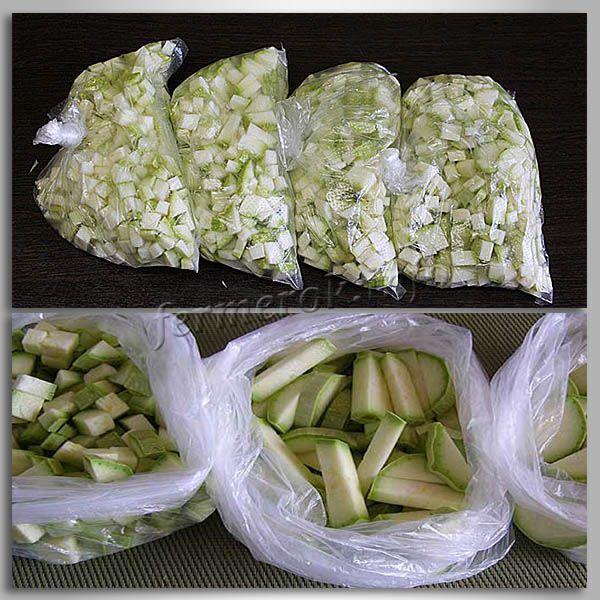
Zucchini cubes and sticks in the freezer
For stews, soups, and some types of caviar, zucchini is usually cut into cubes or cubes. The size of the cubes and bars depends only on personal preference. If you like large cubes of vegetables in your soup, then you need to chop more than a centimeter per cube, and if you like small pieces, then you can chop more finely. How to freeze zucchini cubes? The process is very simple and accessible to everyone.
- Vegetables are washed and peeled (from large seeds, pulp and rough areas of the peel).
- The tail and the place where the stalk is attached are cut off.
- Zucchini is chopped into cubes or cubes of the desired size.
Interesting!
To prevent the zucchini from becoming one large piece of ice, you need to take them out every 1-3 hours and shake them until they are completely frozen.
- To get rid of excess moisture, lay them out on a paper or waffle towel for 20-30 minutes.
- When the pieces are dry, they are poured into a convenient container and placed in the freezer.
It is recommended to place zucchini in containers in portions. This way, you won't need to defrost all the zucchini to prepare the dish or chop off a specific part (which is not always possible). This is just an additional waste of time and effort. If you immediately arrange the pieces in the quantity needed for a particular dish, the cooking process will be easier.
How to freeze
If the summer at the dacha turned out to be fruitful, it would be a sin not to take advantage of this in order to stock up on homemade zucchini from the garden for the winter.
Such vegetables retain almost all vitamins. In addition, frozen zucchini is easy and quick to cook, and it will also save a significant part of the family’s budget during the cold season.
You can make zucchini preparations for the winter in two main ways. Which one suits you best, decide for yourself.
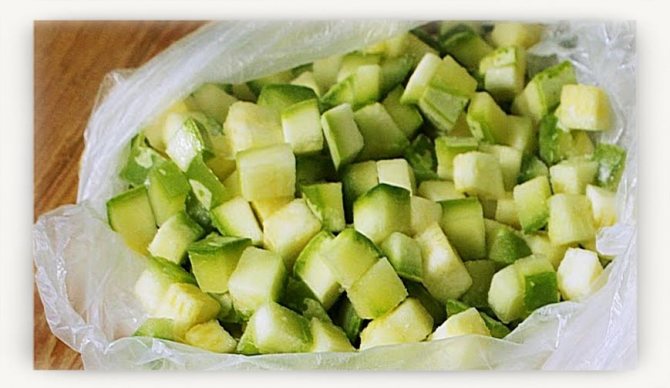
Freezing fresh zucchini
- Wash with soap and peel young zucchini.
- Cut into slices or cubes.
- Blot with a paper towel or cloth to remove excess moisture.
- Divide into bags based on the calculation: one bag is one serving for a baby. Pack the bags as tightly as possible (tie tightly or seal with a special device).
- Place in the freezer.
Freezing zucchini puree
- Wash with soap and peel young zucchini.
- Prepare classic zucchini puree from them as in the recipe above.
- Cool it and pour it into disposable plastic cups, focusing on the serving size of 100-150 g, depending on the age of the baby at the time of use.
- Place the cups in the freezer.
- After a day, take it out, remove it from the cups and pack it into bags as airtight as possible.
- Place back into the freezer.
- Take it out if necessary, defrost it in a saucepan, bring it to a boil and eat it right away with pleasure!
It was Lena Zhabinskaya and everything you wanted to know about preparing zucchini puree for the first feeding. Save the site to your bookmarks and come back again - there is a lot of useful and interesting things ahead, also subscribe to updates and share the article on social networks! Bye bye!
Selection and preparation of zucchini for freezing
In sliced old and large fruits, after defrosting and further heat treatment (boiling, stewing, frying), the inner part breaks off and only one skin remains.
Young light-colored fruits of zucchini, zucchini and medium-sized squash are most suitable for the “adult” baby menu. Carefully inspect each vegetable and choose the smoothest and freshest specimens.
Important! The fruits should be free of damage - scratches, cuts, dents and rotten areas. The skin should be thin and shiny.
You can freeze several servings of vegetables for the winter so that as your child grows up, you can prepare a variety of dishes for him: zucchini puree, multi-ingredient vegetable puree (mixing, for example, potatoes, carrots and zucchini), casserole or pureed soup with croutons.
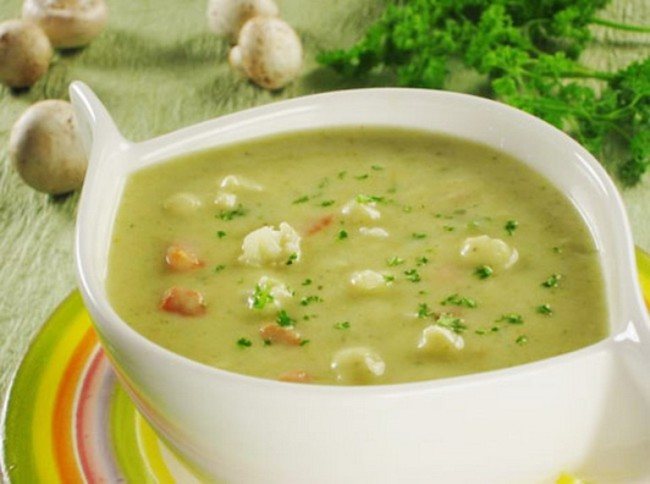
But we’ll talk about how to freeze food in portions for feeding a baby a little later. For now, pay attention to what you need to do with zucchini before freezing it to preserve its taste and quality:
- Wash all zucchini selected for baby food well in cool water.
- Peel the fruit and cut off the ends.
- Rinse the vegetables with running water and pat dry with a paper towel.
- Cut the zucchini into small cubes (1-2 cm wide).
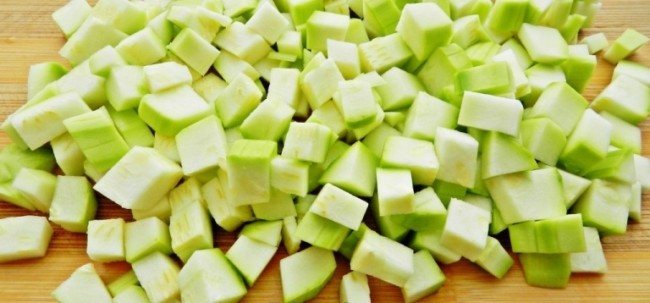
- Pour bottled or filtered water into a saucepan and let it boil. There should be enough water to completely cover the chopped vegetable pieces.
- Place the zucchini pieces into boiling water and blanch them for no more than 5 minutes.
- After the time has passed, place the slices in a colander and allow the water to drain and the vegetables to cool.
There is another way to prepare vegetables for freezing for infant feeding. It does not involve blanching. The cut cubes are left in a colander for a quarter of an hour to drain excess liquid, after which the pieces are dried with a paper towel. Thanks to this procedure, a minimum of moisture will remain in the zucchini, so after defrosting the product will not fall apart or become soggy.
Since vegetable puree is usually prepared for the first feeding of a small child, zucchini can be immediately chopped using a blender and then frozen. This trick will also come in handy for preparing pancakes or casseroles for a growing toddler.





